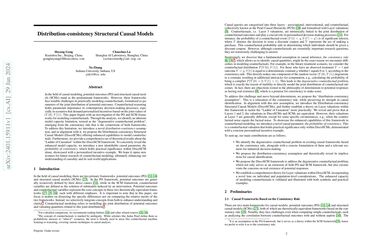Distribution-consistency Structural Causal Models
In the field of causal modeling, potential outcomes (PO) and structural causal models (SCMs) stand as the predominant frameworks. However, these frameworks face notable challenges in practically modeling counterfactuals, formalized as parameters of the joint distribution of potential outcomes. Counterfactual reasoning holds paramount importance in contemporary decision-making processes, especially in scenarios that demand personalized incentives based on the joint values of $(Y(0), Y(1))$. This paper begins with an investigation of the PO and SCM frameworks for modeling counterfactuals. Through the analysis, we identify an inherent model capacity limitation, termed as the ``degenerative counterfactual problem'', emerging from the consistency rule that is the cornerstone of both frameworks. To address this limitation, we introduce a novel \textit{distribution-consistency} assumption, and in alignment with it, we propose the Distribution-consistency Structural Causal Models (DiscoSCMs) offering enhanced capabilities to model counterfactuals. To concretely reveal the enhanced model capacity, we introduce a new identifiable causal parameter, \textit{the probability of consistency}, which holds practical significance within DiscoSCM alone, showcased with a personalized incentive example. Furthermore, we provide a comprehensive set of theoretical results about the ``Ladder of Causation'' within the DiscoSCM framework. We hope it opens new avenues for future research of counterfactual modeling, ultimately enhancing our understanding of causality and its real-world applications.
PDF Abstract
